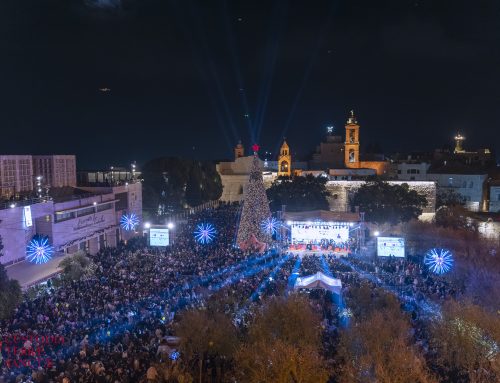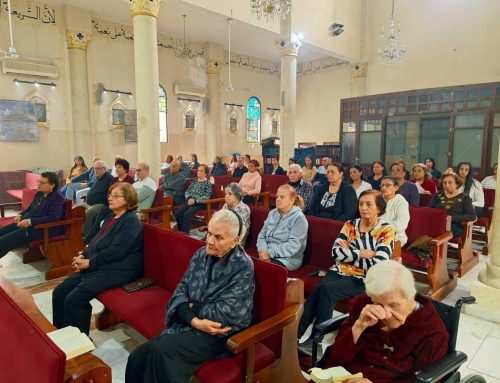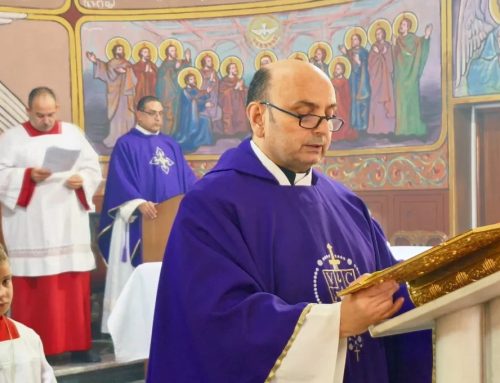Erbil is the largest city in the autonomous Kurdistan region of Northern Iraq. The Erbil Citadel (located in the historic center of the modern city) is one of the oldest fortified settlements in the world. Iraq may be a difficult country to visit, but it has some of the oldest archeological attractions including the ruins of the fabled city of Babylon and the ancient city of Nineveh (Nineveh was the capital of the Assyrian Empire and not so far from Erbil).
The Erbil Citadel is free to visit and is set in an imposing ovoid-shaped tell. It has been built over thousands of years. Today the tell or mound is ringed by an impressive wall of towering 19th-century facades. Here’s what to know about the Erbil Citadel and how to visit it today.
The Ancient History Of The Erbil Citadel
The earliest evidence for occupation at the site dates from the 5th millennium BC and the first time it appears in written records is around 2,300 BC in the Ebla tablets. There is also evidence that the site has been inhabited since the early Neolithic, and it is in the running for being the longest continuously inhabited site on earth (although the oldest is generally considered to be Jericho in Palestine).
Erbil was under the domination of the Sumerians from circa 3000 BC and then under the Akkadian Empire (from 2335 to 2134 BC). Later it was incorporated into the powerful polity of Assyria. At its peak, it was compared in importance to other top Mesopotamian cities like Babylon and Assur. It was an important political and religious center during the Neo-Assyrian period.
The Assyrians called Erbil Arbela — it’s amazing how little its name has changed over thousands of years.
Later History Of The Citadel Of Erbil
Later Erbil was incorporated into the Persian (or Achaemenid) Empire, the Greco-Macedonian Empire (founded by Alexander the Great), the Hellenistic Seleucid Empire, and the Roman Empire (changing hands off-and-on with the Parthian and later with the Sassanid Empire).
It was also an important center for early Christianity. The ancient city eventually went into decline after the Mongols captured it in 1258. Even under early Muslim rule, Erbil remained an important Christian center until around the 9th century.
Its history continued through the Middle Ages and by the time the British took the region over from the collapsed Ottoman Empire, around 3,200 people were living in the town. It is now the administrative center of the Iraqi Kurdistan region with a population of 1.6 million.
Size Of The Ancient Tell Of Erbil – One Of The Longest Inhabited Sites In The World
The Erbil Citadel is set on a large tell. A tell is a hill that has been built up over many generations with succeeding cities being built on top of previous cities. The ancient citadel is being renovated and there are plans to move some families into the citadel to bring it back to life.
The tell or mound rises between 25 and 32 meters (or 82 to 105 feet) above the surrounding plain, a visual reminder of just how much it has been built up over the years. Natural soil has been found around 36 meters or 118 feet below the current surface level.
The citadel once had three districts; the Serai district (where the notable families lived), the Takya district (named after the homes of the dervishes), and the Topkhana district (where the craftspeople and farmers lived).
What To Know About Visiting The Erbil Citadel Today
Much of what is seen today at the Erbil Citadel dates from Ottoman times, but the city goes back to the earliest times of the recorded history of Mesopotamia. The large tell means it can be difficult to study the early history of the site as is it buried under so many layers of later cities.
It is easy to visit the Erbil Citadel as it is located right in the heart of the modern city right beside the modern bazaar.
One of the greatest attractions still standing from ancient Mesopotamia is the ziggurats. Ziggurats were ancient pyramid temples built out of baked brick; the largest and best-preserved ziggurats today is the Chogha Zanbil ziggurat in modern-day Iran (ancient Elam).






